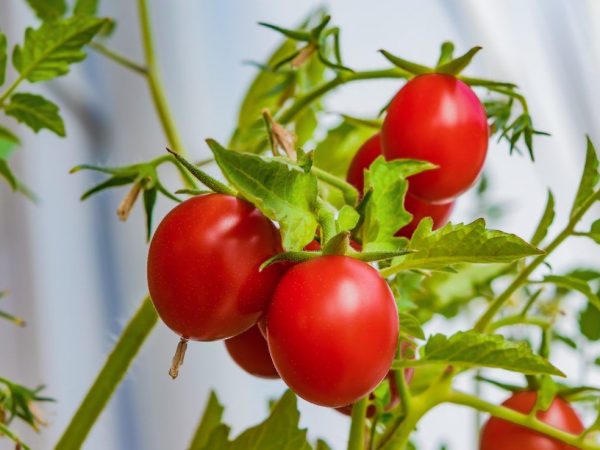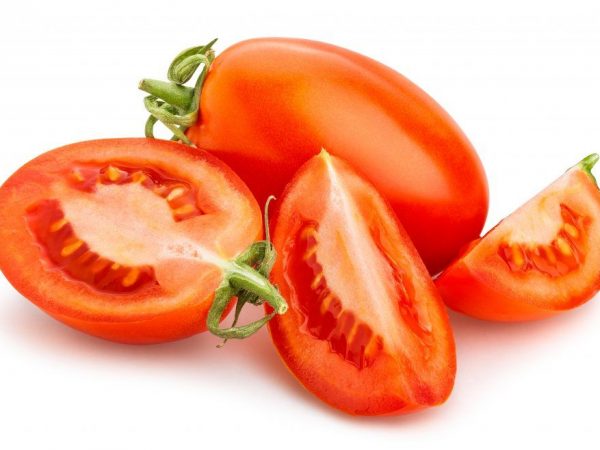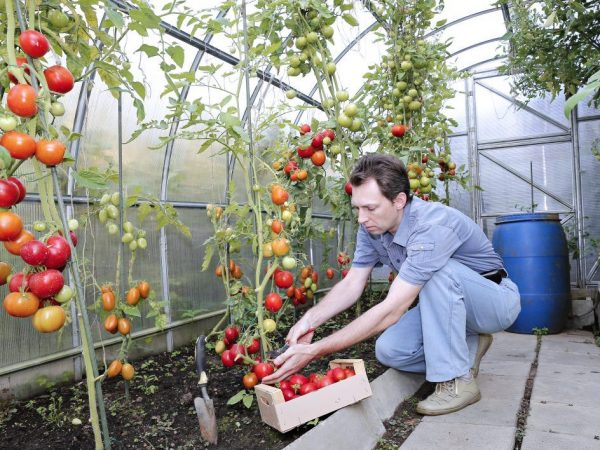When and how to feed tomato seedlings with yeast
When growing tomatoes on their own at home, many gardeners think about how to feed tomato seedlings with yeast. This method is gaining more and more popularity every day, therefore it raises many questions.

Fertilizing tomato seedlings with yeast
The benefits of yeast feeding
The application of top dressing to the soil layer when growing tomatoes plays a key role in increasing the vitality of the plant and strengthening its resistance to infections and pests. Fertilizing a culture with yeast is not the last among the additional nutrients of the plant.
At the stage of cultivating tomato seedlings, usually 2 dressings are carried out with yeast:
- the initial one, a week after the process of picking seedlings in a container with a large volume,
- secondary, a week before planting seedlings in the ground.
Reviews of gardeners about the need to feed seedlings with yeast indicate that such additional nutrition, even at the very beginning of the growing season, can ensure the yield of tomatoes in the future, and natural fertilization with yeast will prevent unnecessary biological synthetic fertilizers from accumulating in plant tissues at the very beginning of the development of a vegetable crop.
In combination with plant ash, which is characterized by a high content of potassium and phosphorus, watering tomatoes, peppers, eggplants and flowering plants with a solution with dry nutritional yeast can become a complex nutrition.

The benefits of yeast feeding
The yeast feeding contains yeast fungi, which, when watered, by their presence ensure the activation of the vitality of the microflora of the soil layer, creating the best conditions for the growth of seedlings. When they enter the soil, the active components of yeast fungi start the process of processing organic matter, saturating it with compounds with nitrogen components.
By watering tomato seedlings with yeast dressing, the gardener can feed his future harvest and then get some advantages when growing a vegetable crop:
- the vitality of tomato seedlings increases,
- Prevents excessive stretching of plants after a pick, even with a lack of natural light, by providing additional energy,
- there is an increase in crop resistance to plant diseases and pests,
- the formation of the necessary root system is activated due to the increase in the number of small roots.
The microelements that are useful for plants, which are part of the yeast feed for tomato and pepper seedlings, properly structure the soil mixture, thereby preventing the development of bacteria and the multiplication of viral infections.
Yeast Fertilizer Recipes
Gardeners' reviews mention 3 basic recipes that can be adopted when growing tomatoes and peppers.
- In the first option, an infusion can be made from 0.5 liters of water at room temperature (it can be slightly warmer) and 100 g of baker's yeast.It is recommended to take either well water or filtered water. The resulting solution is diluted in a ratio of 1 to 10 before direct use.
- In the second variant of fertilizer preparation, you will need only 10 g of dry product per bucket of water at room temperature or warmer. Add 2 tbsp. l. sugar and leave for the fermentation process for 3 hours. The resulting solution for watering tomato seedlings is diluted in a ratio of 1 to 5.
- The third option for using yeast for feeding tomato seedlings suggests making a mash from 100 g of yeast, 0.5 cups of granulated sugar and 3 liters of warm water. The mixed ingredients are covered with a gauze cloth on top of the jars (containers) and placed in a warm, dark place for a week to allow the fermentation process to take place. The resulting yeast solution can be diluted in a proportion of 200 ml in a regular bucket of water.
The third recipe for preparing top dressing for tomatoes with yeast, according to gardeners, is considered the most effective if you want to properly activate the growth of a vegetable crop.
The basics of feeding
Fertilization of tomatoes with yeast is referred to as biological stimulators of the growth of vegetable crops, since watering with this fertilizer ensures the active development of both the ground and underground parts of the plant while using the hidden resources of the vegetable culture.
If you want to stimulate the growth of seedlings, it will be enough to feed the seedlings with yeast at the growing stage while still at home. Any of the three basic recipes for making fertilizer are suitable for such watering. Re-feeding the seedlings with yeast is carried out after a 2-3-week interval, when the seedlings will be transplanted into open ground in beds or into protected ground in a greenhouse.

Feeding rules
Do not rush to pour out the solution with yeast left after feeding tomato seedlings: it will become an excellent source of nutrients not only for tomatoes and peppers, they can fertilize seedlings of cabbage, cucumbers and other vegetables, as well as feed flowering plants to help pick up color for indoor roses, garden asters, home geraniums and petunias.
The fungi present in the fertilizer with yeast are able to turn on their activity only under warm temperature conditions, therefore it is advisable to water the seedlings transplanted into open soil only after warming up the earth to 16 ° C, no less. The grown seedlings of tomatoes and peppers at home can be watered with yeast at any time, since an optimal warm temperature regime has been created for it.
Yeast feeding rules
To obtain a rich harvest of tomatoes, it is advisable to fertilize a vegetable crop with yeast at least 3 times during the gardening season:
- the primary is carried out a week later, after the tomatoes grown at home have been planted in the soil, the standard for yeast feeding is 0.5 liters for each young bush,
- during the final rooting of tomato seedlings, the consumption rate of yeast feeding should be within 1 liter for each young plant,
- in the period before the immediate beginning of flowering of the bushes, the required amount of fertilizer prepared with yeast is at least 2 liters per one adult bush.
Gardeners use different methods through yeast feeding. Some make liquid fertilizer according to well-known recipes and water tomato bushes with it. Others prefer to lay dry yeast directly into a cavity formed in the soil, then cover it with earth and water it from above.


